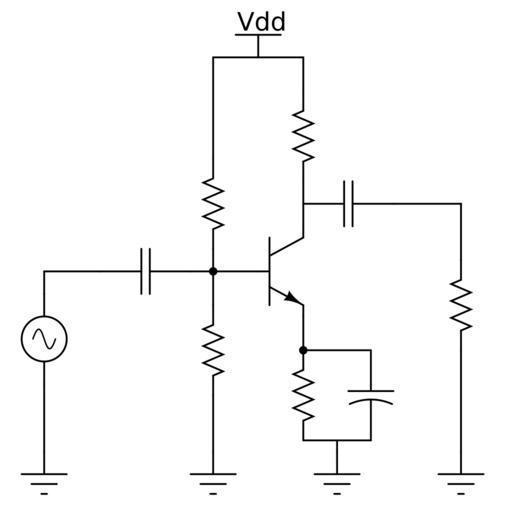
To use a transistor as an amplifier:
(A) The emitter base junction is forward biased and the base collector junction is reverse biased
(B) No bias voltage are required
(C) Both junctions are forward biased
(D) Both junctions are reverse biased
Answer
218.7k+ views
Hint: Transistor is made up of the semiconductor material and is of two types as $PNP$ transistor and the $NPN$ transistor. In these transistors, the $PN$ junction diode is connected back to back with the three terminals in it as base, collector and emitter.
Complete step by step solution
The work of the amplifier is to strengthen the weak signal and the transistor is used for this purpose. In this transistor, the emitter base junction is made forward biased by connecting the voltage across it to maintain the flow of the current by maintaining the polarity of the input current.

Due to the presence of the low resistance in the input, even the small change in it, can cause appreciable change in the output current. The collector is reversely biased by connecting the voltage in the reverse direction, this makes the large voltage drop in it. Hence this makes the transistor as an amplifier by large output voltage from small input voltage.
Thus the option (A) is correct.
Note: Transistors act as both the amplifier and the switch. When using the transistor as the amplifier, it should be properly biased for work. While using the transistor as the switch, the base connecting the emitter and the collector act as the controller or switch.
Complete step by step solution
The work of the amplifier is to strengthen the weak signal and the transistor is used for this purpose. In this transistor, the emitter base junction is made forward biased by connecting the voltage across it to maintain the flow of the current by maintaining the polarity of the input current.

Due to the presence of the low resistance in the input, even the small change in it, can cause appreciable change in the output current. The collector is reversely biased by connecting the voltage in the reverse direction, this makes the large voltage drop in it. Hence this makes the transistor as an amplifier by large output voltage from small input voltage.
Thus the option (A) is correct.
Note: Transistors act as both the amplifier and the switch. When using the transistor as the amplifier, it should be properly biased for work. While using the transistor as the switch, the base connecting the emitter and the collector act as the controller or switch.
Recently Updated Pages
A square frame of side 10 cm and a long straight wire class 12 physics JEE_Main

The work done in slowly moving an electron of charge class 12 physics JEE_Main

Two identical charged spheres suspended from a common class 12 physics JEE_Main

According to Bohrs theory the timeaveraged magnetic class 12 physics JEE_Main

ill in the blanks Pure tungsten has A Low resistivity class 12 physics JEE_Main

The value of the resistor RS needed in the DC voltage class 12 physics JEE_Main

Trending doubts
JEE Main 2026: Application Form Open, Exam Dates, Syllabus, Eligibility & Question Papers

Derivation of Equation of Trajectory Explained for Students

Hybridisation in Chemistry – Concept, Types & Applications

Understanding the Angle of Deviation in a Prism

Understanding Collisions: Types and Examples for Students

Understanding Atomic Structure for Beginners

Other Pages
JEE Advanced Marks vs Ranks 2025: Understanding Category-wise Qualifying Marks and Previous Year Cut-offs

How to Convert a Galvanometer into an Ammeter or Voltmeter

Understanding Centrifugal Force in Physics

JEE Main Marking Scheme 2026- Paper-Wise Marks Distribution and Negative Marking Details

Degree of Dissociation: Meaning, Formula, Calculation & Uses

Understanding Electromagnetic Waves and Their Importance




